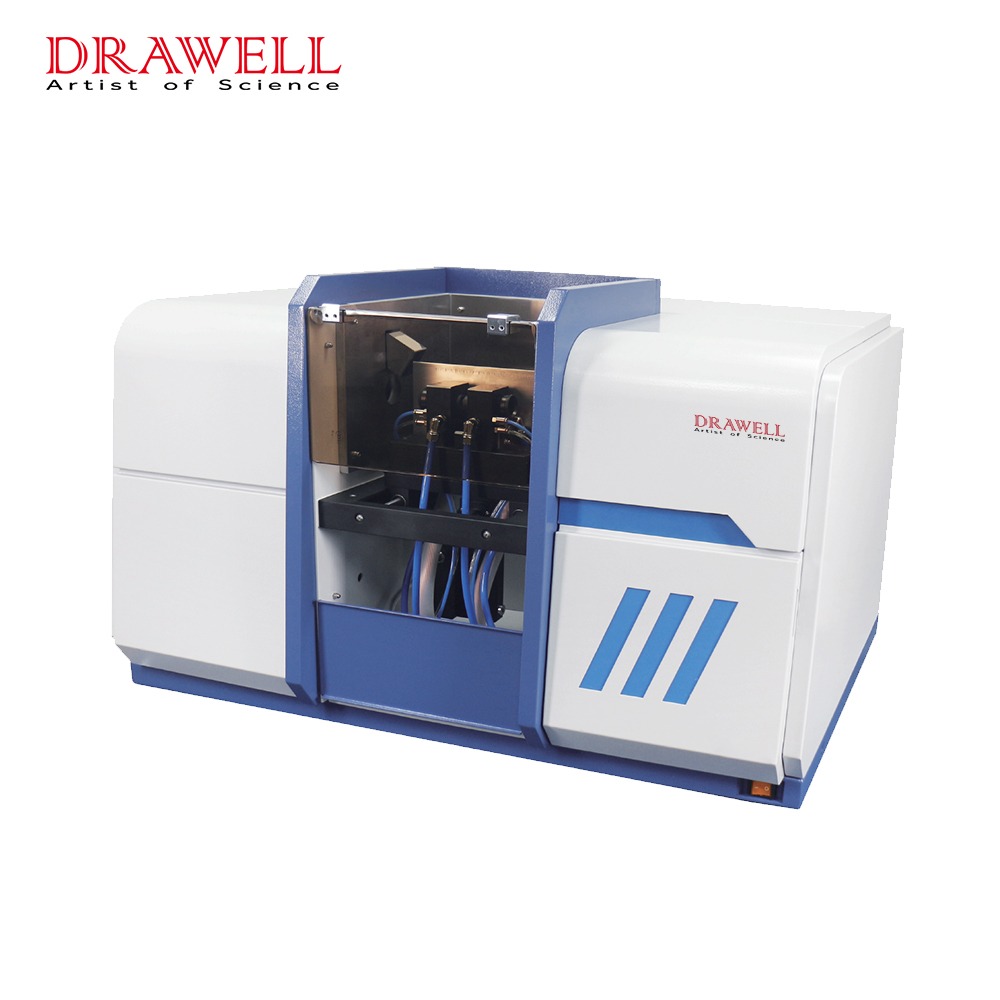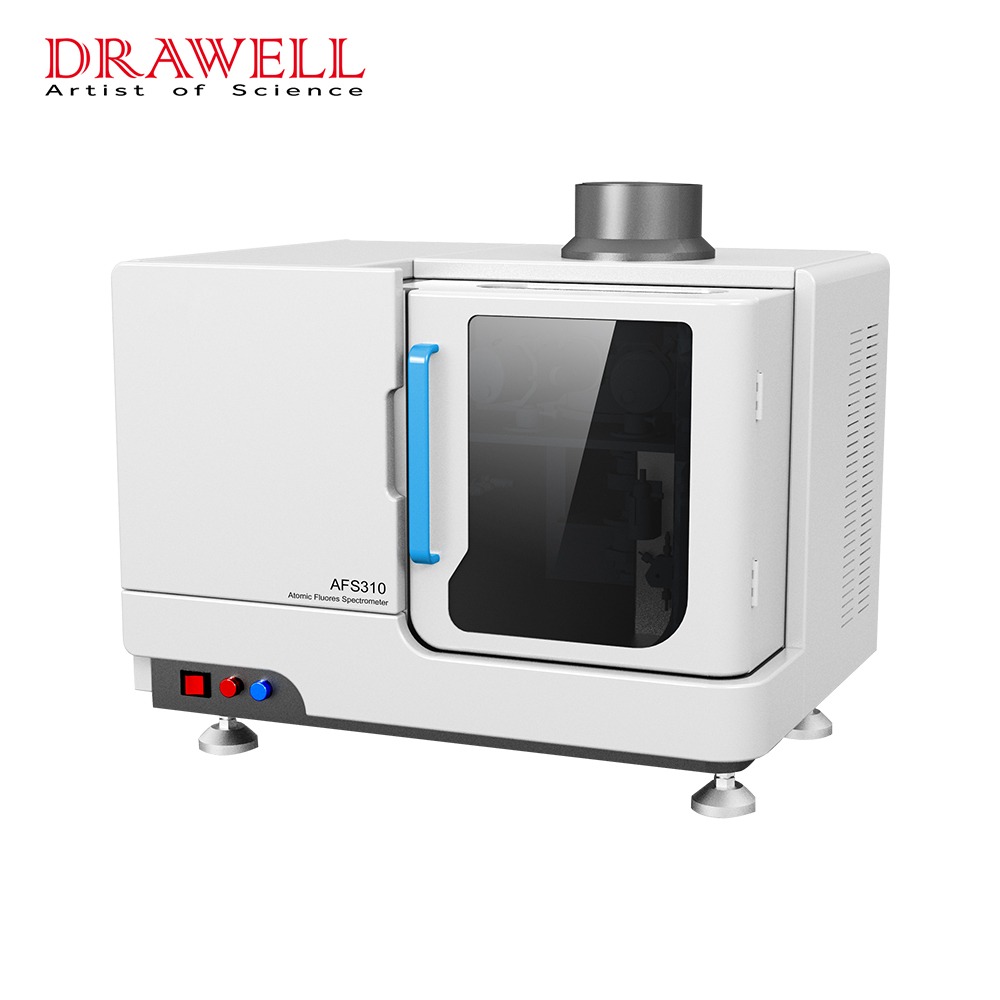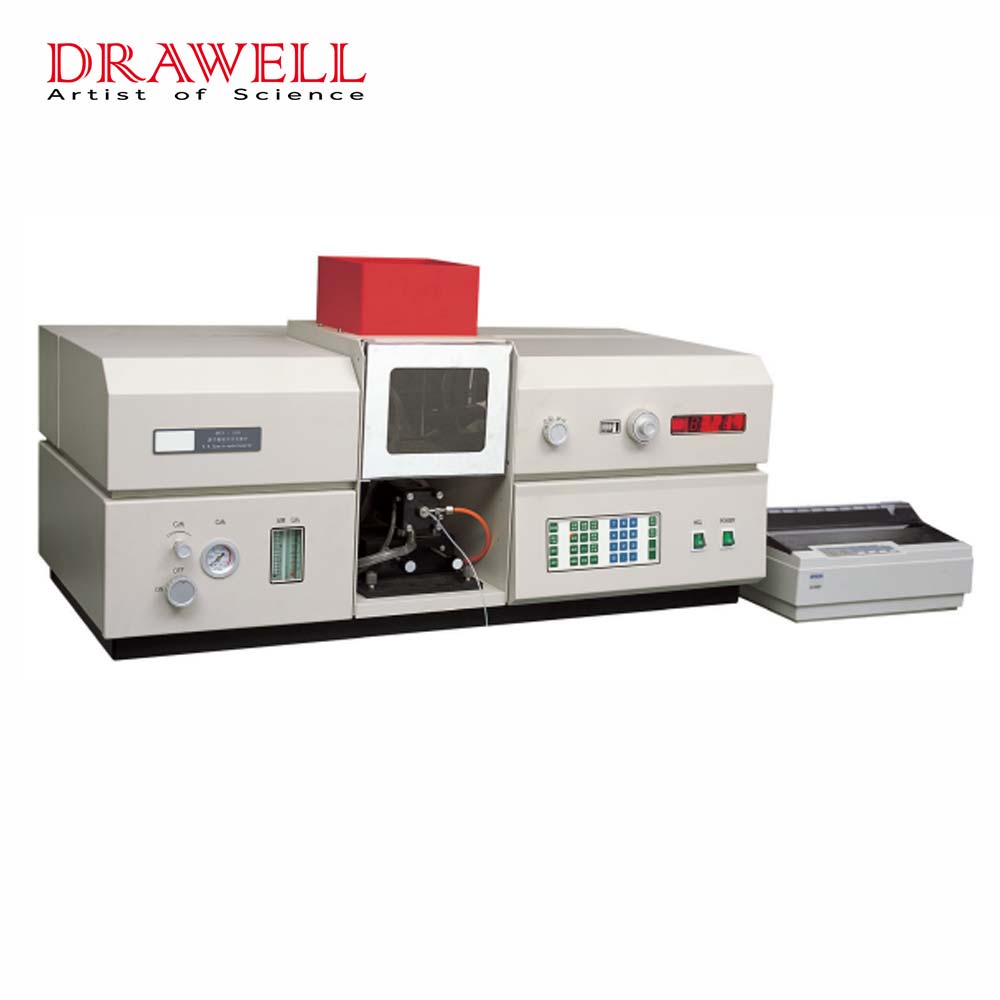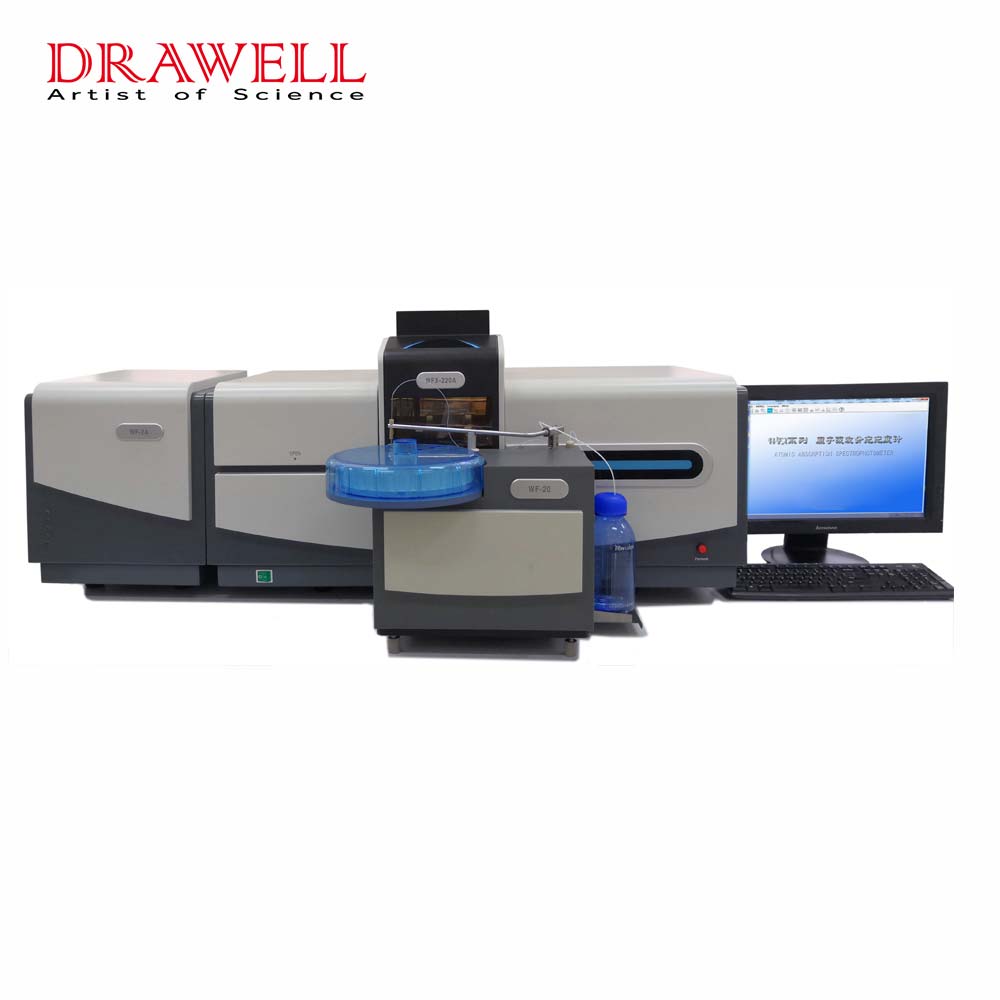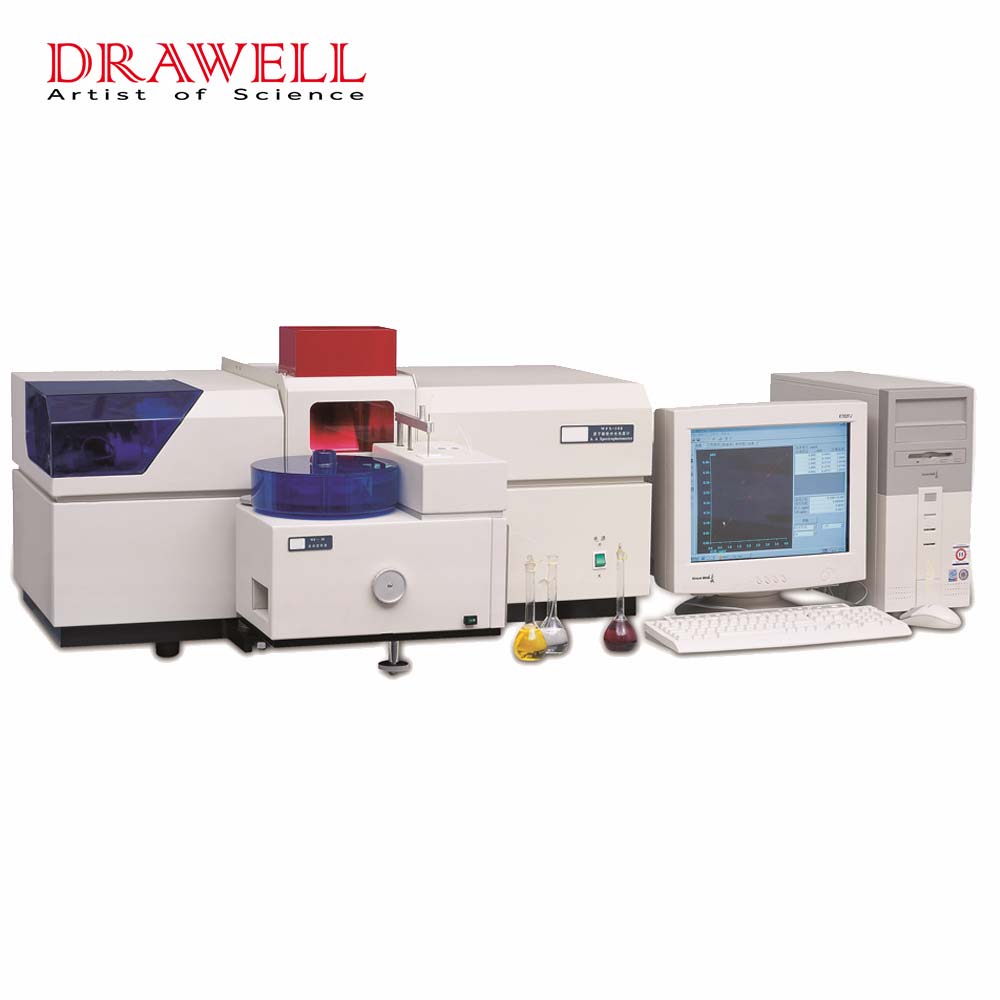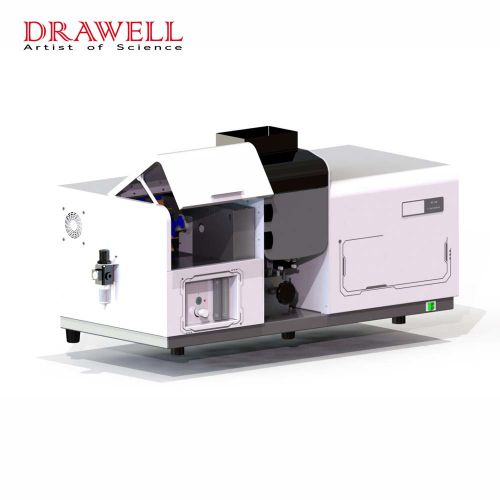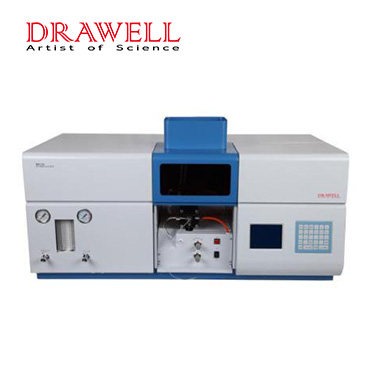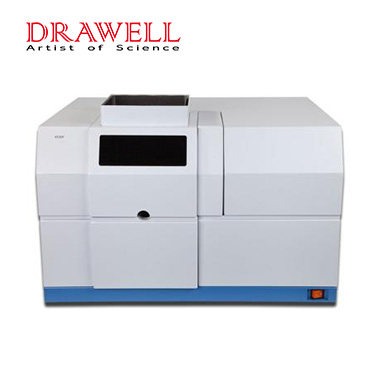AAS, which is the abbreviation of Atomic Absorption Spectroscopy, is a powerful analytical technique widely used for detecting and quantifying metals and other elements in various samples. While AAS is highly effective in determining the concentration of specific elements, integrating it with other analytical techniques can enhance its capabilities, allowing for multi-parameter analysis and more comprehensive data collection.
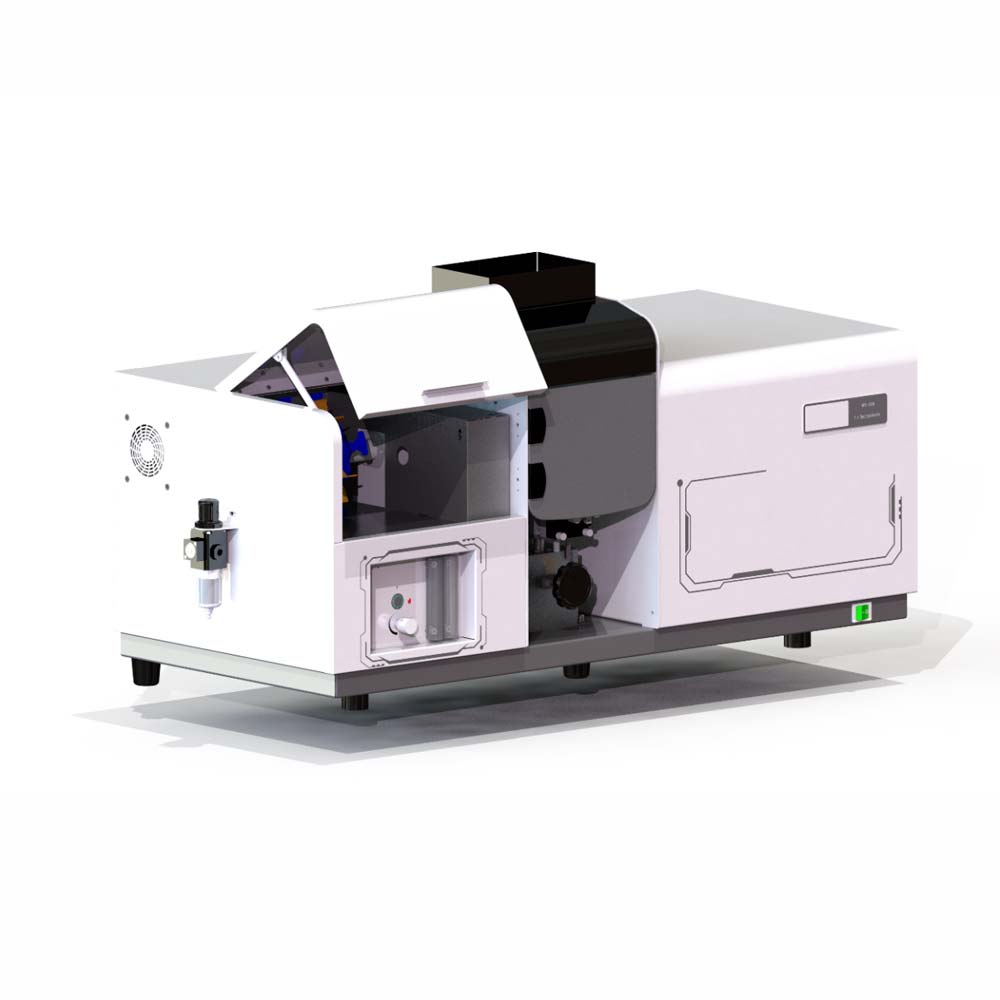
Why Choosing Integrating AAS with Other Analytical Techniques?
Atomic Absorption Spectroscopy operates on the principle of absorption of light by free, ground-state atoms. When a sample is atomized, the atoms absorb light of a specific wavelength corresponding to the energy difference between the ground and excited states. The amount of light absorbed is proportional to the concentration of the element in the sample, making AAS a precise method for quantitative analysis of metals like lead, copper, zinc, and others.
However, AAS spectrophotometer is limited to detecting one element at a time, which can be a constraint when analyzing complex samples that contain multiple elements. This limitation has led to the development of integrated techniques that combine AAS with other methods to perform multi-parameter analysis.
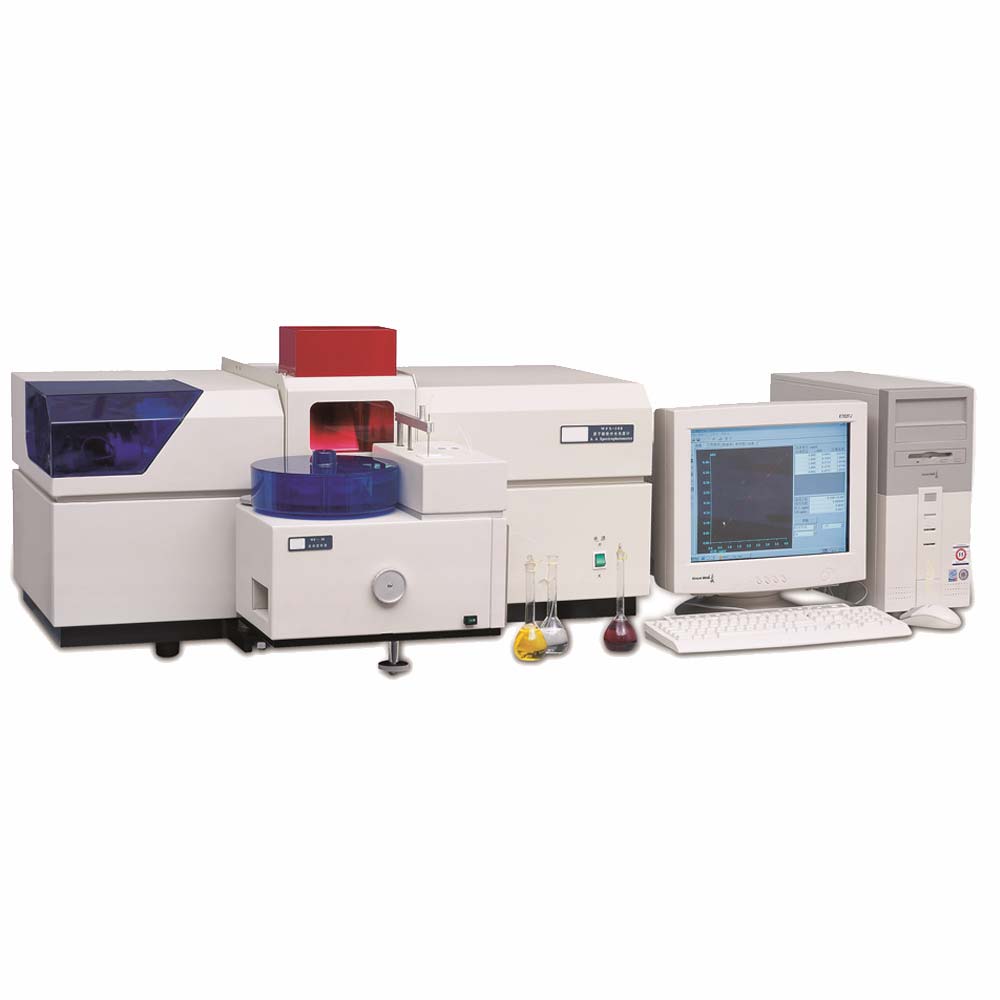
Techniques Complementary to AAS
1. Inductively Coupled Plasma Optical Emission Spectroscopy (ICP-OES)
Overview: ICP-OES uses an inductively coupled plasma to ionize atoms in the sample, causing them to emit light at characteristic wavelengths. The emitted light is measured to determine the concentration of various elements.
Complementary Benefits
Simultaneous Multi-Element Analysis: Unlike AAS, which analyzes one element at a time, ICP-OES can measure multiple elements simultaneously.
Broader Elemental Range: ICP-OES can detect a wider range of elements, including those with higher atomic numbers that might not be efficiently analyzed by AAS.
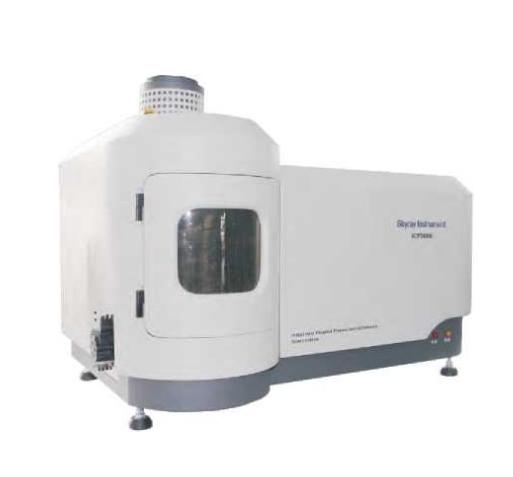
2. Inductively Coupled Plasma Mass Spectrometry (ICP-MS)
Overview: ICP-MS uses an inductively coupled plasma to ionize sample atoms, which are then analyzed based on their mass-to-charge ratio. It is known for its high sensitivity and ability to detect trace elements at very low concentrations.
Complementary Benefits
Ultra-Trace Detection: ICP-MS can detect elements at parts-per-trillion levels, which is useful for applications requiring extremely low detection limits.
Isotopic Analysis: ICP-MS provides isotopic information, which can be valuable for studying elemental composition and tracing sources of contamination.
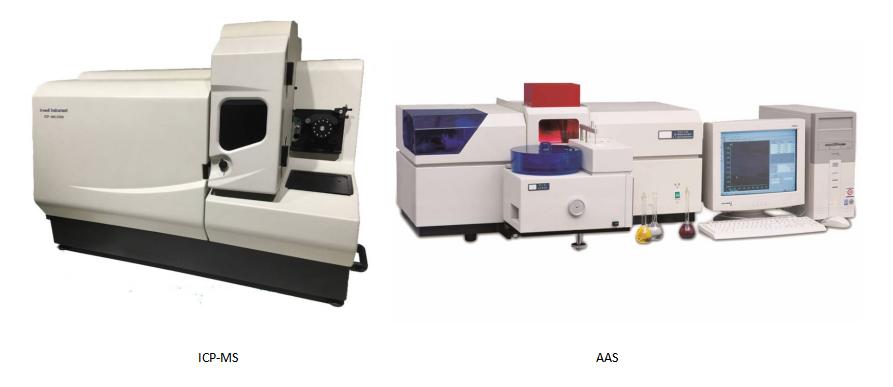
3. X-Ray Fluorescence (XRF) Spectroscopy
Overview: XRF measures the fluorescent X-rays emitted from a sample when it is exposed to primary X-rays. This technique is effective for detecting a broad range of elements, especially heavier ones.
Complementary Benefits
Non-Destructive Analysis: XRF is non-destructive, allowing for the analysis of samples without altering their physical properties.
Simultaneous Multi-Element Detection: XRF can analyze multiple elements at once, providing a comprehensive elemental profile.
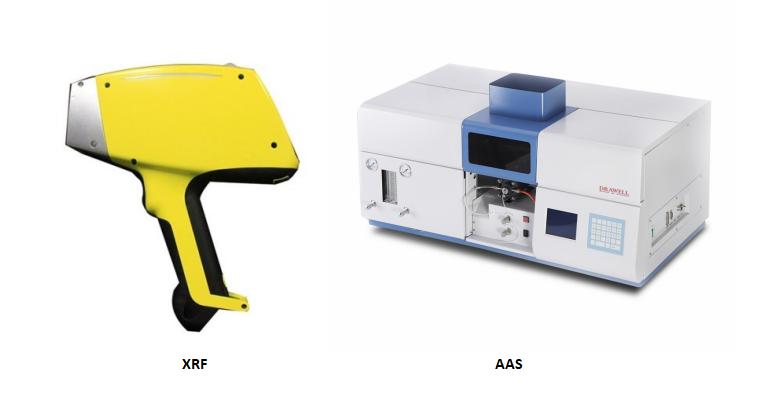
4. Electrothermal Vaporization (ETV)
Overview: ETV is a sample introduction technique used with AAS to improve sensitivity. It involves vaporizing the sample before introducing it into the atomizer.
Complementary Benefits
- Enhanced Sensitivity: ETV enhances the detection limits of AAS, making it possible to detect trace elements with greater precision.
- Improved Sample Handling: ETV allows for the analysis of samples in solid or complex matrices without extensive sample preparation.
5. Fourier Transform Infrared (FTIR) Spectroscopy
Overview: FTIR spectrophotometer rmeasures the absorption of infrared light by a sample, providing information on molecular bonds and functional groups.
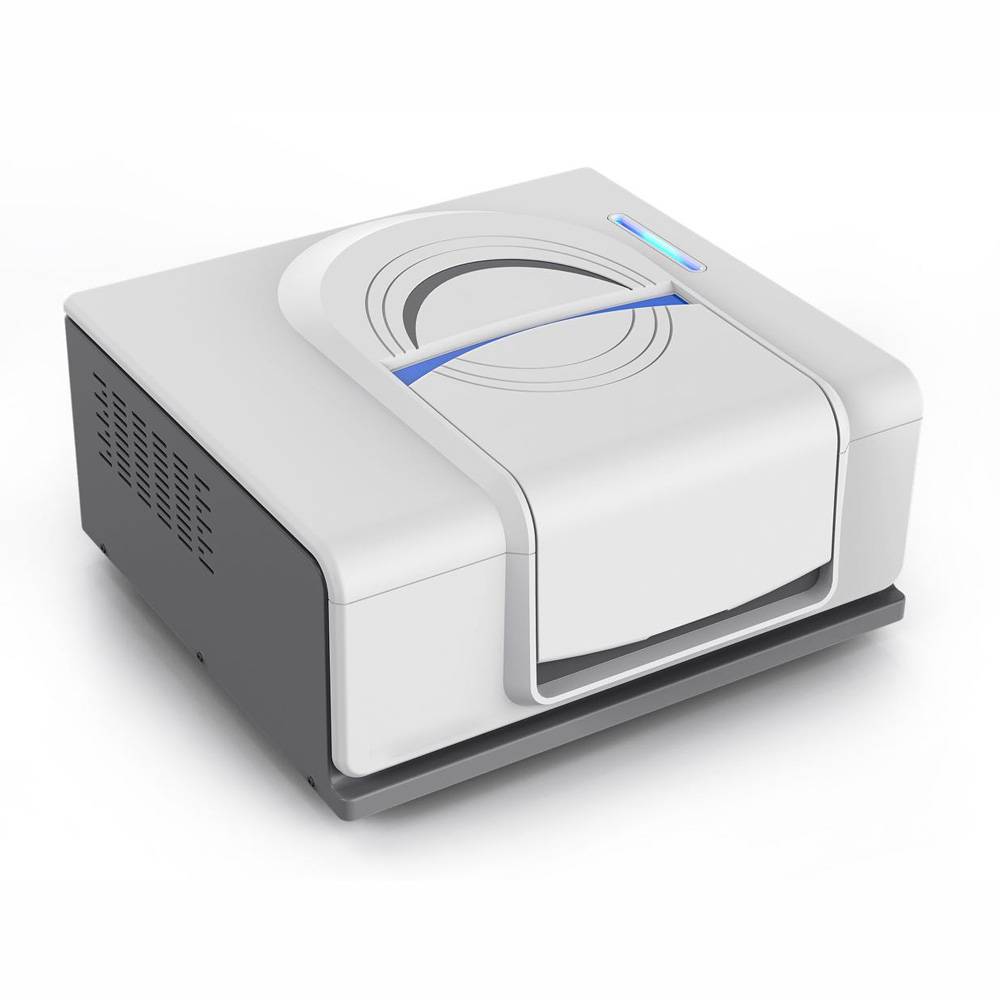
Complementary Benefits
- Molecular Information: FTIR offers detailed information on organic compounds and functional groups, complementing AAS’s focus on elemental analysis.
- Comprehensive Analysis: Integration with FTIR allows for a holistic analysis of samples containing both organic and inorganic components.
6. Atomic Emission Spectroscopy (AES)
Overview: AES, similar to ICP-OES, involves the excitation of atoms to emit light, which is then measured to determine elemental concentrations. It uses different excitation sources, such as a flame or electric arc.
Complementary Benefits
- Varied Excitation Sources: AES can be adapted to different types of samples and matrices, providing versatility in elemental analysis.
- Simultaneous Analysis: Like ICP-OES, AES can analyze multiple elements simultaneously.
7. Neutron Activation Analysis (NAA)
Overview: NAA involves irradiating a sample with neutrons, causing elements to form radioactive isotopes. These isotopes emit gamma rays, which are measured to determine elemental concentrations.
Complementary Benefits
- Trace Element Detection: NAA is effective for detecting trace elements and is especially useful for samples where other methods may be less effective.
- Minimal Sample Preparation: NAA often requires minimal sample preparation and can analyze a wide range of elements.
8. Raman Spectroscopy
Overview: Raman spectroscopy measures the scattering of monochromatic light by molecular vibrations. It provides information about molecular composition and structure.
Complementary Benefits
- Molecular and Structural Information: Raman spectroscopy complements AAS by providing detailed information on molecular structure and composition.
- Non-Destructive: Like XRF, Raman spectroscopy is non-destructive, preserving the sample for further analysis.
Applications of Integrating AAS with Other Analytical Techniques
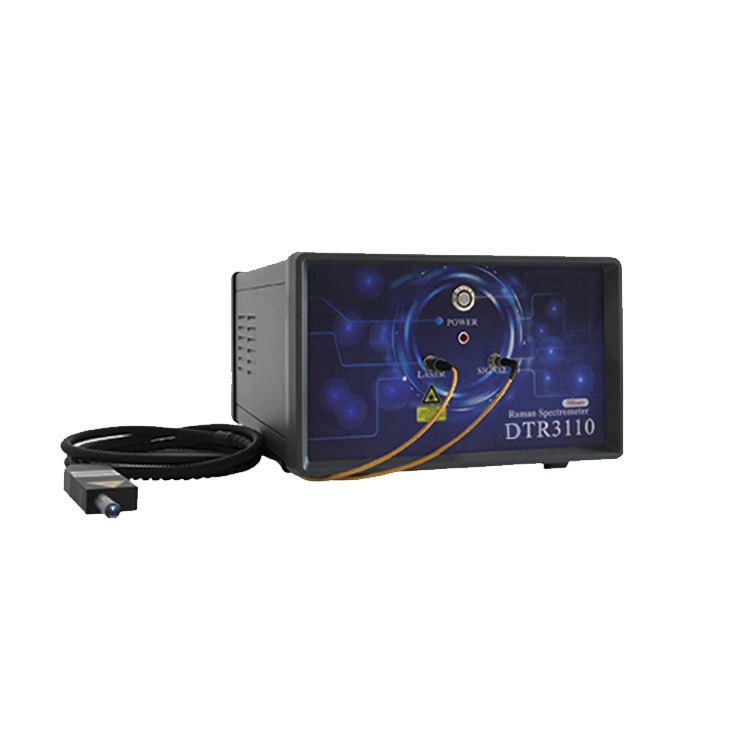
Integrating AAS with Other Analytical Techniques
This chart provides a clear overview of how integrating AAS with other analytical techniques enhances various applications, offering benefits such as comprehensive analysis, improved detection limits, and detailed understanding of sample composition.
| Application Area | Techniques Integrated | Benefits | Example Use Cases |
| Environmental Monitoring | AAS + ICP-OES, ICP-MS | – Comprehensive analysis of pollutants. – Simultaneous detection of multiple elements. – Ultra-trace detection capabilities. | – Monitoring heavy metal contamination in water, soil, and air. – Assessing environmental impact of industrial activities. |
| Food and Beverage Analysis | AAS + XRF, FTIR | – Detection of both inorganic and organic contaminants. – Simultaneous multi-element and molecular analysis. – Ensures safety and quality control. | – Analysis of nutrient levels and contaminants in food products. – Quality control in beverage production. |
| Clinical Diagnostics | AAS + ICP-MS | – Precise measurement of trace elements. – Ultra-trace detection of metals in biological samples. – Comprehensive understanding of element levels. | – Diagnosing metal toxicity or deficiencies in blood and urine samples. – Monitoring therapeutic levels of metals. |
| Materials Science | AAS + XRF, FTIR | – Detailed analysis of both elemental composition and molecular structure. – Non-destructive analysis of materials. – Insight into both inorganic and organic components. | – Analysis of metal alloys, composites, and ceramics. – Characterizing material properties and composition. |
| Pharmaceutical Analysis | AAS + ICP-MS | – High precision in detecting trace elements. – Ensures compliance with safety and regulatory standards. – Validates the purity of pharmaceutical products. | – Testing for impurities and contaminants in drugs. – Ensuring the accuracy of active ingredient concentrations. |
| Geological and Mining | AAS + ICP-OES, XRF | – Comprehensive analysis of mineral content. – Simultaneous detection of multiple elements. – Efficient analysis of complex ore samples. | – Exploration and assessment of mineral deposits. – Analysis of ore quality and composition. |
| Forensic Analysis | AAS + ICP-MS, FTIR | – Detailed elemental and molecular analysis of evidence. – Identification of trace elements and compounds. – Comprehensive forensic investigations. | – Analyzing trace elements in environmental samples from crime scenes. – Identifying substances in forensic samples. |
| Waste Management | AAS + ICP-OES, XRF | – Assessment of waste composition. – Detection of hazardous metals and contaminants. – Monitoring of recycling processes. | – Characterizing hazardous waste materials. – Monitoring the effectiveness of waste treatment processes. |
Drawell: A Trustworthy Provider of Integrating AAS with Other Techniques
With a strong commitment to delivering high-quality analytical solutions, Drawell offers a range of integrated systems and services of AAS with other techniques, designed to enhance multi-parameter analysis across various fields.
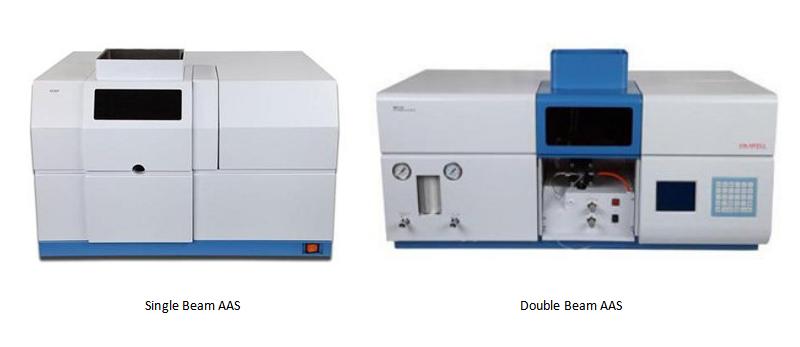
Key Integrated Systems and Services Provided by Drawell
1. Integrated Analytical Systems
Combining AAS with ICP-OES and ICP-MS: Drawell offers integrated systems that combine AAS with Inductively Coupled Plasma Optical Emission Spectroscopy (ICP-OES) and Inductively Coupled Plasma Mass Spectrometry (ICP-MS). This integration allows for simultaneous multi-element analysis and ultra-trace detection, providing comprehensive elemental profiles and high precision.
2. Advanced Sample Introduction Techniques
Electrothermal Vaporization (ETV): Drawell provides advanced ETV systems that enhance the sensitivity of AAS, allowing for the accurate detection of trace elements in complex samples. This technology improves detection limits of AAS and simplifies sample handling.
3. Complementary Techniques Integration
X-Ray Fluorescence (XRF) and Fourier Transform Infrared (FTIR) Spectroscopy: Drawell integrates AAS with XRF and FTIR to offer a complete analytical solution. This combination provides detailed information on both inorganic and organic components, ensuring thorough analysis of diverse samples.
4. Comprehensive Support and Services
Expert Consultation and Training: Drawell offers expert consultation to tailor integrated solutions to specific analytical needs. They also provide training and support to ensure optimal use of their integrated systems, helping clients achieve accurate and reliable results.
5. Quality and Reliability
Cutting-edge Technology: Drawell employs cutting-edge technology and maintains stringent quality standards to ensure that their integrated systems provide exceptional performance and reliability across diverse analytical applications.
The systems and services of integrating AAS with other analytical techniques from Drawell, ensure that clients receive advanced, reliable, and comprehensive solutions for a wide range of analytical challenges.

